One of the fundamental factors for the success of mycosis treatment is contacting the right doctor. Patients often confuse the specialization of doctors and do not know which doctor to contact for nail fungus. As a result, precious time, extra money and nerves are wasted.
A fungal infection requires immediate treatment. The earlier the disease is detected and diagnosed, the more effective the therapy will be. Furthermore, the choice of doctor depends on the stage of the disease. In advanced forms of the disease, the help of several doctors, including a surgeon, will be needed.
About the disease
Mycosis is an infection caused by pathogenic bacteria. Adults are mostly susceptible, but even children are not immune to the infection. The disease first affects the areas between the toes, gradually moving towards the nails. The fungus destroys keratin, the main component of the nail. The result is the fragility of the plate, the arrest of its growth, the formation of cracks and specific spots on the surface of the nail.
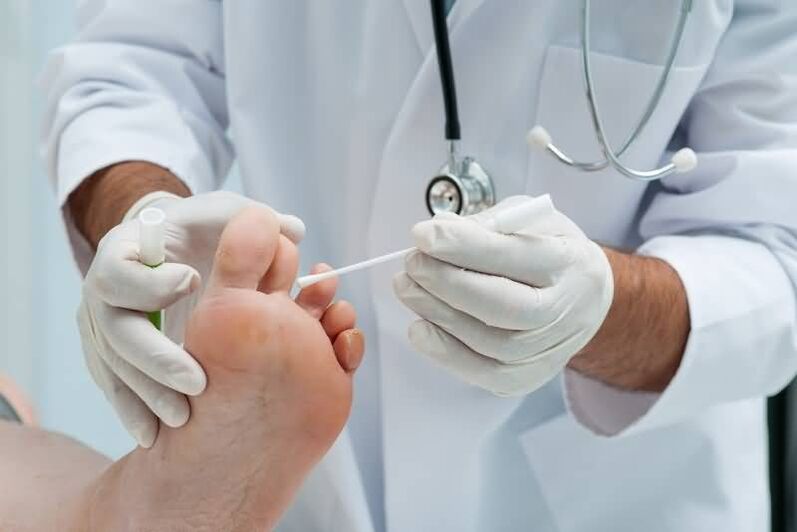
Causes of infection
There are several causes of fungal infection. The main ones should be highlighted:
- Weak immunity.
If the body is weakened by a disease or does not receive the necessary amount of vitamins, a person runs the risk of contracting mycosis. The body's protective barriers will not be able to prevent the spread of the disease.
- Exhausted nervous system.
Frequent stress, nervous breakdowns and the habit of taking everything to heart contribute to the deterioration of the immune system and increase the risk of infections.
- Neglect of hygiene standards.
Mostly, the mushroom is collected in public places. Inattention and negligence towards one's cleanliness are the main reasons for the spread of mycosis. You should always wash your hands before eating in cafes, bars, restaurants and after using the toilet. You should always carry spare socks or tights with you when using sports or play shoes at rental centers or entertainment centers. It is also advisable to carry hand sanitizing gel with you so that if there is no water tap nearby, you can cure your palms of dirt and germs.
- Inappropriate communication with animals.
Fungal spores are carried not only by people, but also by animals. All lovers of petting stray dogs and cats should free themselves from this habit. No matter how cute the animals are, they pose a health hazard. In case of contact, you should wash your hands thoroughly with soap, treat them with a disinfectant solution and wash your clothes.
- Improper storage of shoes and hosiery.
The fungus reproduces more easily in a warm, humid environment. Considering this fact, after walking in the rain or on damp ground, you need to dry your shoes by placing them near a heater or radiator, and put wet socks or tights in the washing machine. If you leave your shoes to dry on their own, there is no guarantee that they will dry completely. Meanwhile, the spores can become activated very quickly, and the next day a person becomes infected with mycosis.
In almost all cases of fungal infection, the person himself is to blame. It is worth paying more attention to details, not ignoring hygiene rules and using only your own clothes and shoes. You also need to monitor your health. Take vitamins and micronutrient capsules regularly. For a healthy and clean person, the disease will pass.
Symptoms of the disease
Medicine knows more than ten types of mycosis. And there are several tens of thousands of causative agents of this disease. Of course, each type differs from the other in its characteristic symptoms. But we can identify the main signs of the disease. They are found in every patient in one variation or another.
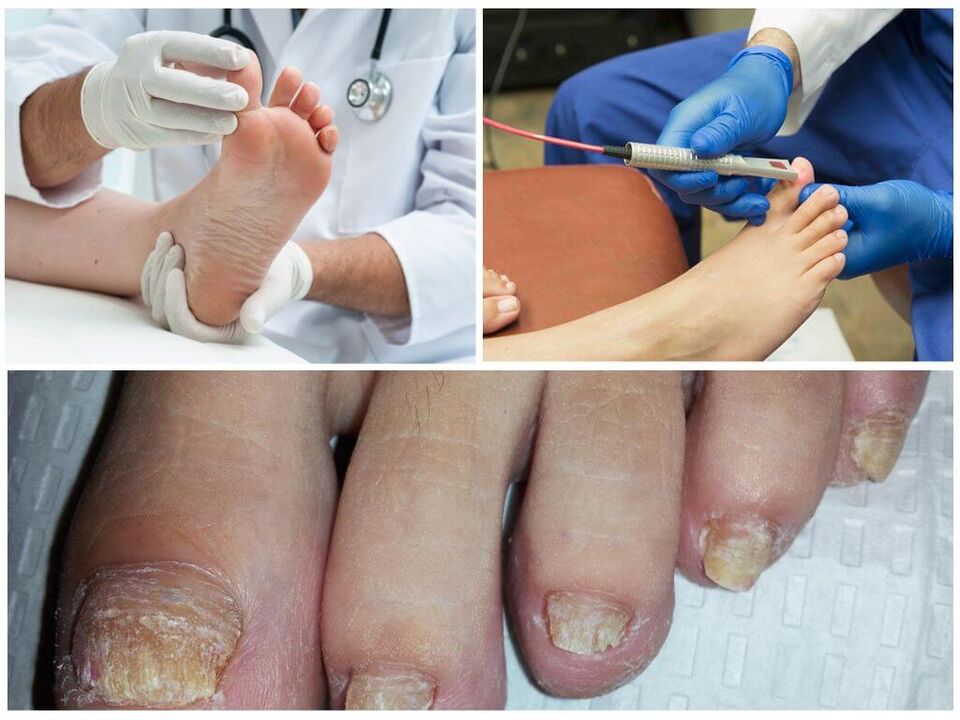
Main symptoms:
- thickened or thinned nail plate;
- loss of shine of the nail, acquisition of dullness;
- the nail begins to crack and peel;
- change in the color of the nail plate (white, yellow, brown, green, black);
- the appearance of spots, stripes, dots on the nail;
- the appearance of blisters, ulcers;
- mucus discharge from under the nail.
Other characteristic symptoms are itching and burning in the affected area of the fingers or toes. The pain can become so severe that the person must take painkillers.
The fungus often spreads beyond the nail. It affects the nail ridges, the interdigital space and the foot. In rare and particularly severe cases, the disease spreads throughout the body. Sometimes pathogenic bacteria also affect internal organs.
Nail fungus detection
The difficulty of identifying the disease is its main problem. It is because of the lost time that the infection develops and takes root in the patient's body. The infection in the later stages is very difficult to eradicate completely. Infected people need six months of treatment for the therapy to bring positive results. Sometimes the mycelium becomes so deeply embedded that it takes a lifetime to heal it. Only temporary improvements can be achieved, after which the fungus returns again.
It is extremely difficult to detect mycosis at an early stage. The symptoms are not as pronounced as in the later stages, when the bacteria create mycelium, their mycelium. Patients do not pay attention to slight itching, confusing it with tiredness after walking. Some people do not react at all to changes in the color of the plate. People confuse crumbling and brittle nails with a temporary disease that should go away on its own.
The detection of at least one symptom is a reason to immediately consult a doctor. However, not everyone knows which doctor treats nail fungus. Usually people go to a therapist, but this is not entirely true. You should make an appointment with a dermatologist or mycologist.
The medical facility will carry out the necessary tests and tell you whether the person is really infected with the infection. It is impossible to independently determine its presence, just as it is impossible to discover its typology. Namely, the specific treatment and recovery recommendations depend on the type of mycosis.
See a dermatologist
Since fungus is a skin disease, it is logical to seek help from a dermatologist. He will examine the nail suspected of infection, interview the patient about his condition and take him for tests. After receiving the results of medical tests, the dermatologist will issue a verdict.
If the disease is in an early stage, this specialist will be able to solve the problem. If the mycosis is in an advanced form or is characterized by complex symptoms, the doctor will send the patient to a visit to the mycologist.
It should be remembered that a dermatologist is a doctor with a broader scope. He treats all skin diseases, but has no specific knowledge. They are available from a mycologist who specializes only in treating mushrooms.
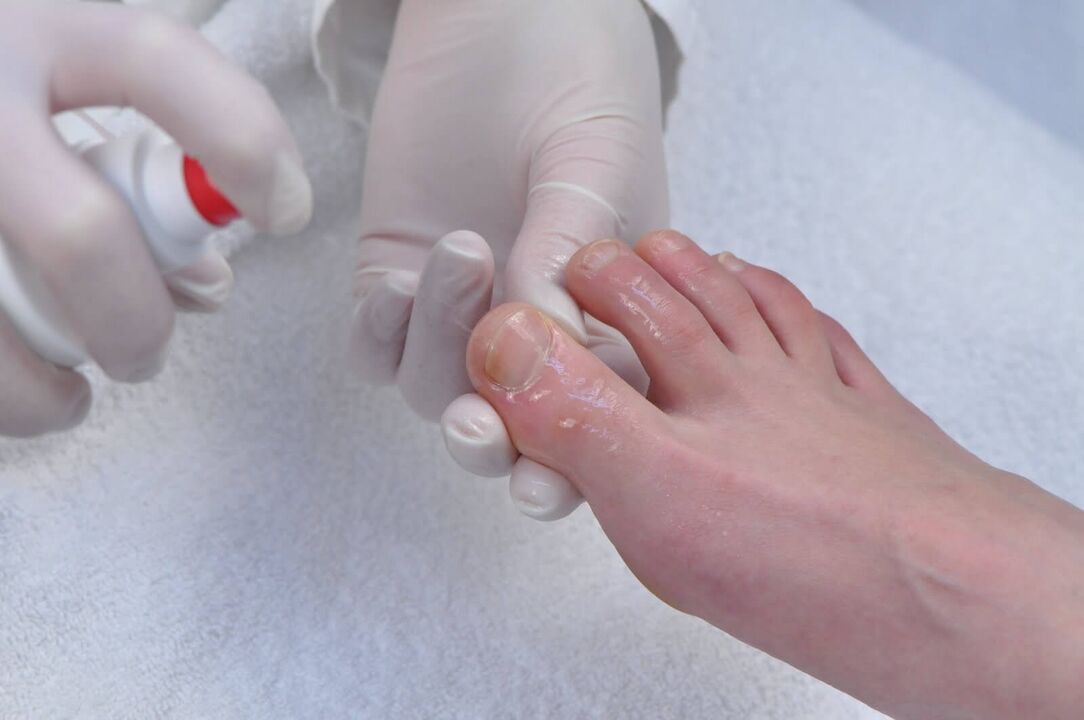
Appointment with a mycologist
A mycologist treats all forms of fungal infection, from early to advanced stages. This specialist conducts initial examinations, determines which tests will be appropriate, and develops a treatment algorithm. If the patient has the possibility, it is best for her to consult a mycologist immediately. This way he will save time and receive a more competent and clear answer to the question about the type of disease and how to treat it.
An appointment with a mycologist is usually paid. Doctors visit patients in special centers, where a general practitioner or dermatologist prescribes a referral. Few clinics have a personal mycologist.
The mycologist will guide the patient from the first visit until recovery. It is not advisable to change doctors during treatment. A new doctor will need time to study medical history, and this is a waste of time.
After the patient recovers, the mycologist prescribes advice on maintaining health. Preventive measures must be strictly observed. In this case, the fungus will not return.
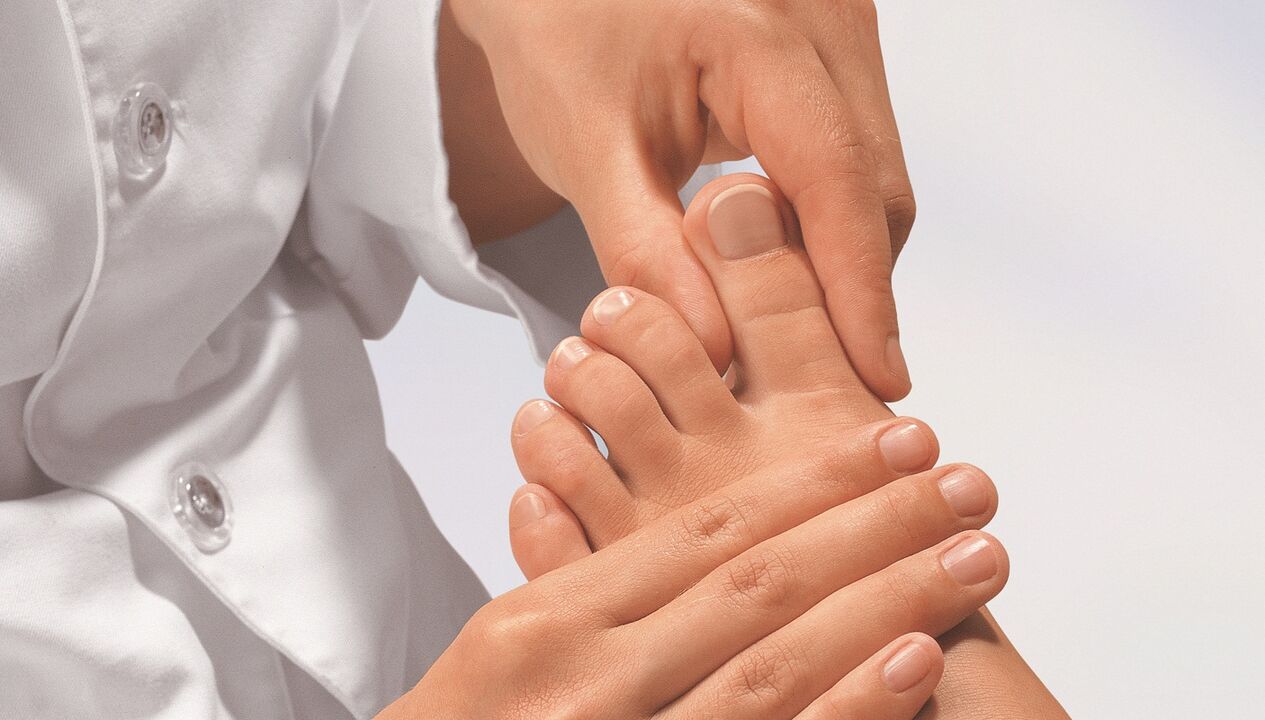
Diagnostic and therapeutic algorithm
Treatment of mycosis consists of sequentially related stages. It is important to undergo each of them on time under the supervision of an experienced doctor.
Algorithm of antifungal therapy:
- Contact a dermatologist or go directly to a mycologist.
- Initial exam and obtaining a referral for testing.
- Take tests and receive their results.
- Repeat appointment with doctor and determination of subsequent treatment.
- Purchase of drugs for therapy.
So the patient must visit the doctor regularly to monitor the progress of the disease. If the effect is positive, the therapy continues and ends with recovery. If a negative reaction to the drugs occurs or no improvement occurs, further studies are carried out and a new therapy is prescribed.
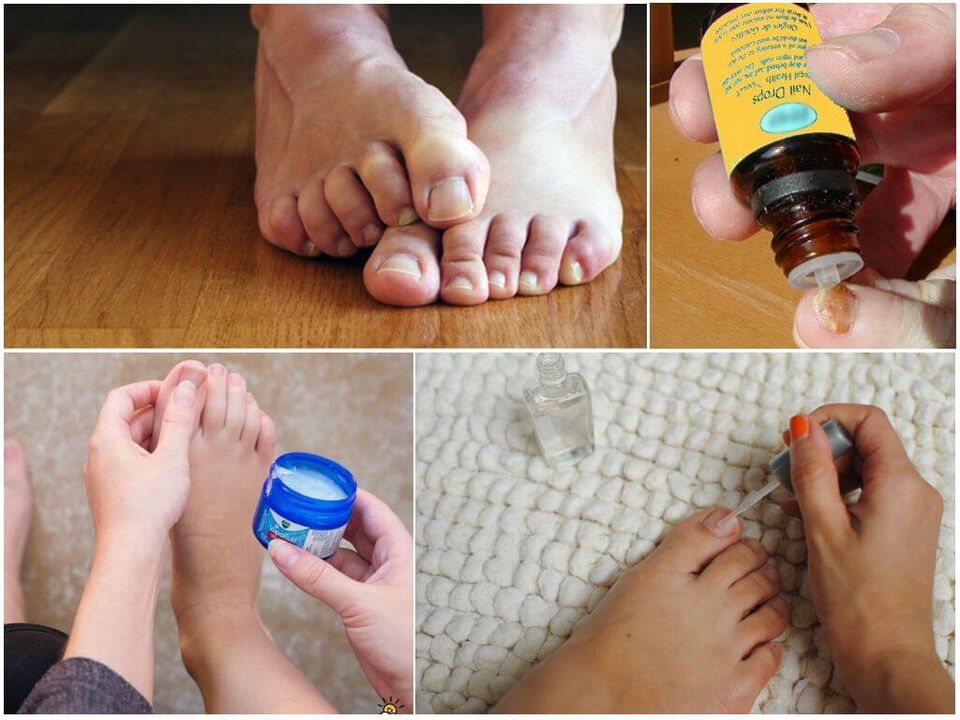
Tests to clarify the diagnosis
For effective treatment, it is necessary to accurately diagnose the cause and type of disease. The nature of therapy will depend on the type of pathogen.
Basic diagnostic tests:
- Microbiological methods.
First, the doctor must determine whether the patient is truly infected. To do this, he must take some material, that is, a potentially infected nail. The doctor scrapes or cuts a part of the plate. The material is then placed in a solution, after which a specialist examines it under a microscope. This is how he sees the presence or absence of harmful bacteria that caused the infection.
- ELISA (enzyme-linked immunosorbent assay).
The doctor draws blood from a patient's vein. The result of the analysis arrives quickly. The response indicates the reaction to the mycosis: positive, negative or unspecified. In the latter case it is necessary to carry out further tests or repeat the blood donation after a week.
- PCR study.
As in the first study, PCR requires a curettage. As a result, the doctor can accurately tell whether a person is a carrier of the infection or not. Of the disadvantages it is worth noting the fact that PCR is not able to identify the type of fungus. The doctor only announces its presence or absence.
The fungus in the initial stage is difficult to diagnose the first time. This is what is called a label-free reaction. To get a definitive diagnosis, doctors will send the patient for further tests or ask them to return in a week or two. Then the doctors will consult and tell you which doctor the patient should consult next if they have developed nail fungus. Most likely it will be a mycologist.
Help from other specialists
Often the help of the dermatologist and mycologist is not enough. Sometimes the patient does not have the opportunity to immediately make an appointment with a specialized specialist. So it is recommended to consult a therapist.
The therapist will conduct an initial examination and, based on the results of the examination, write recommendations for testing. She will also tell you who to contact next: a dermatologist or a mycologist. An appointment with a therapist is important for patients living in small towns or residential areas of megacities. Not all clinics have their own dermatologist or mycologist. In this case the therapist becomes a specialist who can direct the infected person to the necessary treatments.
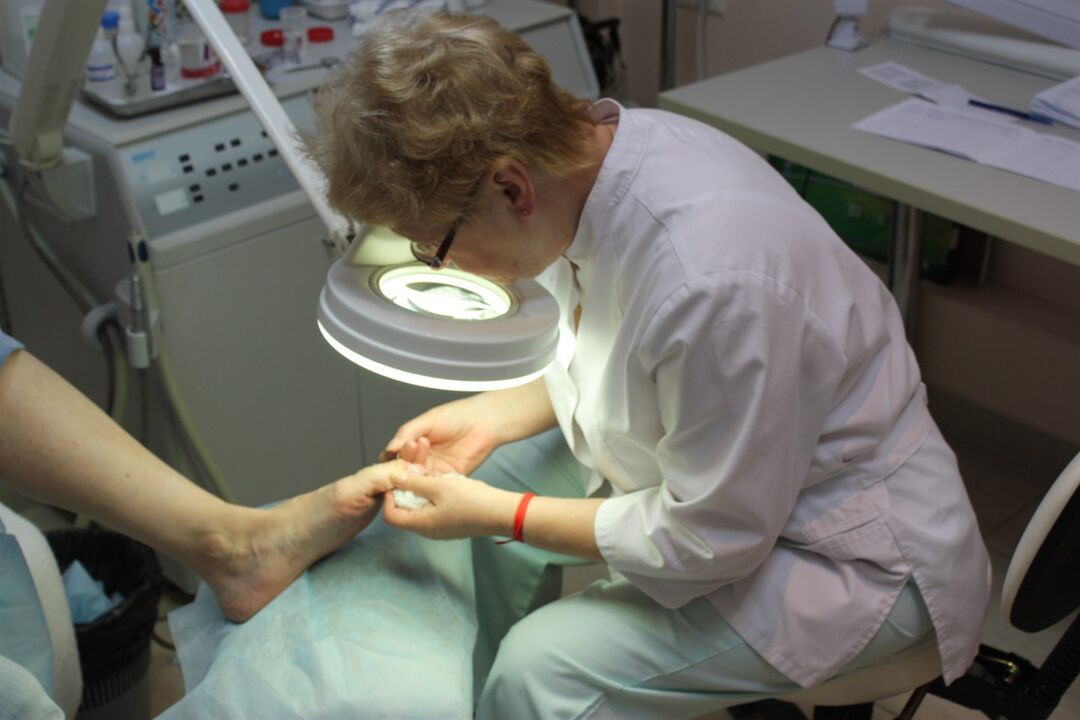
If the nail fungus has already developed quite seriously and has reached an advanced stage, the patient will need to make an appointment with a surgeon. Sometimes professional intervention is necessary. Sometimes there is no way to save the affected nail. It must be surgically removed. The doctor will cut out the plaque from the nail bed and advise the patient on further actions.
If a patient cannot immediately make an appointment with a specialist, she should consult a therapist. This doctor has all the knowledge necessary to conduct an initial examination and make recommendations on next steps in terms of antifungal therapy.
Treatment in the initial stage
Early stage athlete's foot can be treated with antifungal gels, patches and varnishes. The latter contain fungicides, substances that prevent the spread of the infection. They stop the growth of bacteria and neutralize the mycelium.
It is not recommended to select drugs independently. Only a doctor, after carrying out an examination, can give effective advice and write the necessary prescription.
As a supplement to ointments and varnishes, you can use traditional therapeutic recipes. Particularly popular are the following:
- vinegar;
- iodine;
- Potassium permanganate;
- table or sea salt.
They are used to prepare lotions and baths. Iodine and potassium permanganate should not be used too often because they cause dry skin. To avoid damaging the skin, you need to take breaks.
Recipes based on herbs and vegetables are also in demand. For example, mint, onion, garlic compresses. Additionally, it is recommended to smear the affected fingers or toes with olive oil or tea tree oil.
Alternative therapy should only be used in addition to the main treatment, but in no case replace it.
Treatment in development and abandonment
In advanced forms of the disease, ointments and baths are essential. It requires the use of so-called antifungals. They are prescribed by a doctor. The choice of tablets is based on the type of fungus, the patient's health status, his age and other characteristics. Antifungals are characterized by a large list of contraindications and side effects. It is forbidden to purchase them without a mycologist's prescription.
Prevent the risk of infection
To maintain good health, you need to take preventative measures. They will prevent the risk of nail fungus infection.
Best Tips:
- Use only personal hygiene items: towels, sports mats, wet wipes.
- Monitor the cleanliness of your socks and change pairs regularly.
- Clean your shoes before and after going out.
- In case of humid climate or excessive personal sweating of the feet, dry the shoes carefully.
- Avoid tactile contact with strangers.
- After handling animals, especially homeless ones, wash your hands with soap.
- In public places always carry disinfectant gel with you.
- It is preferable to bring personal effects (if any) to the rental bases.
- Get manicures and pedicures regularly and avoid the formation of corns, calluses and cracks on your feet.
- Wear only comfortable shoes that don't pinch or rub your feet.
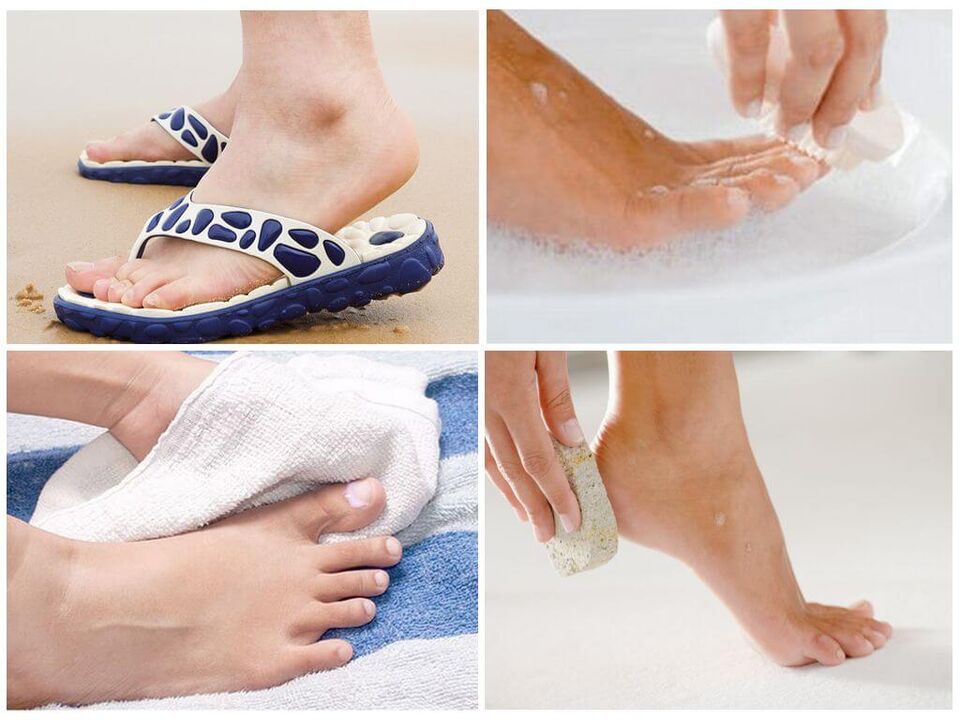
If you have already had a fungal infection, you should follow all the recommendations of your doctor. Strictly following therapy, the patient will be able to recover and forget about the unpleasant disease. But you have to be patient: the infection is difficult to eradicate. It will take several months and perhaps years.















